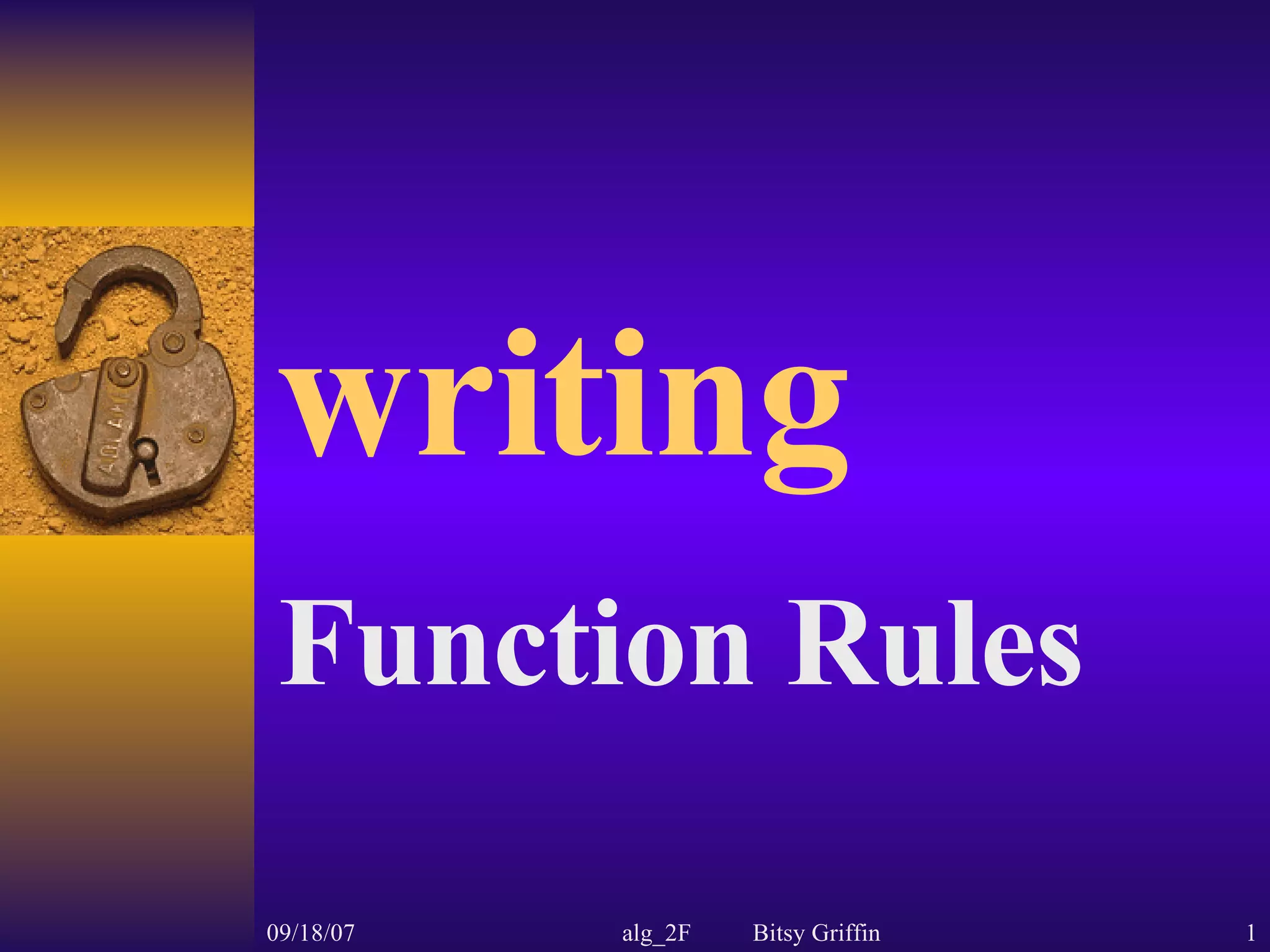
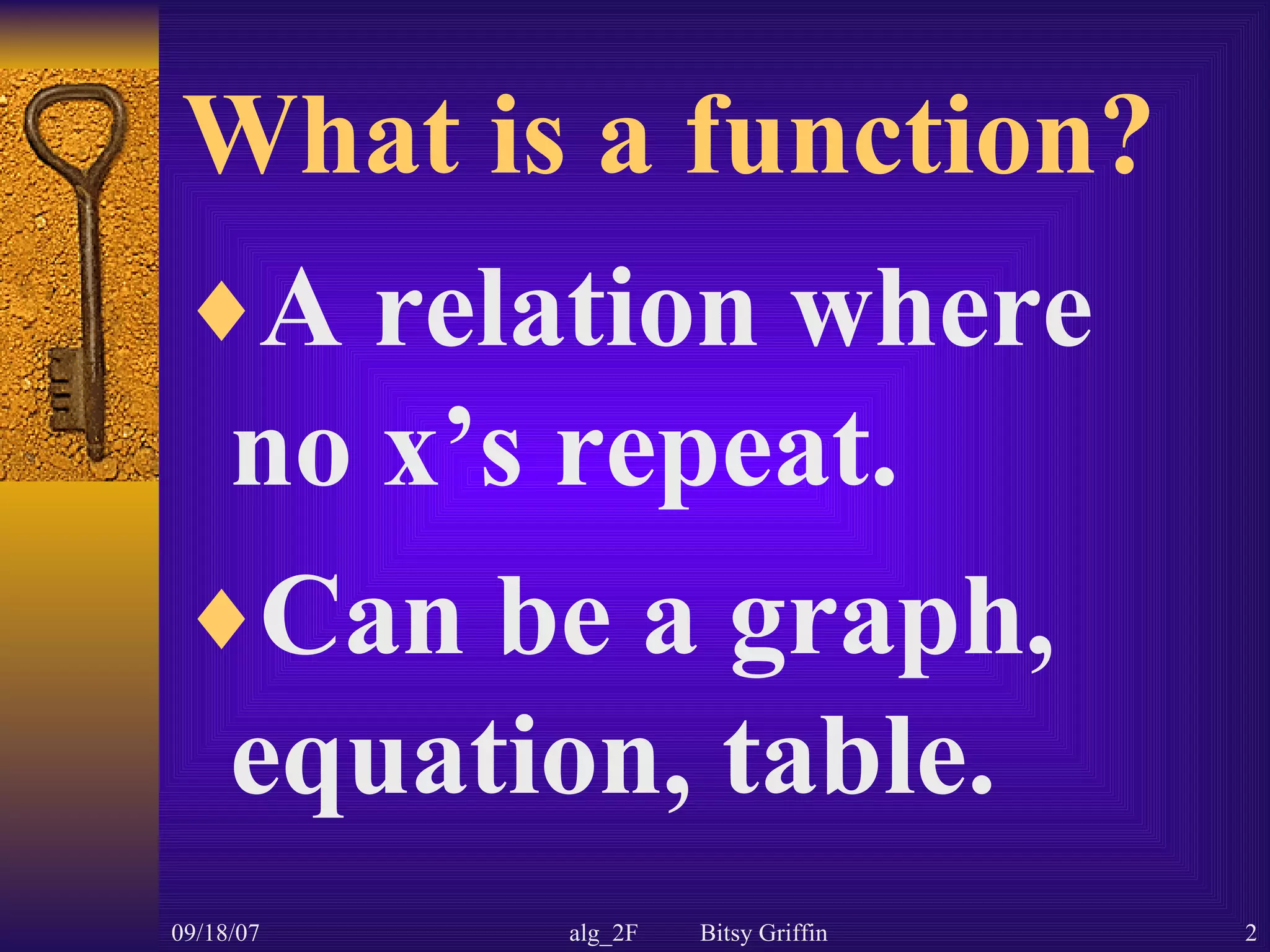
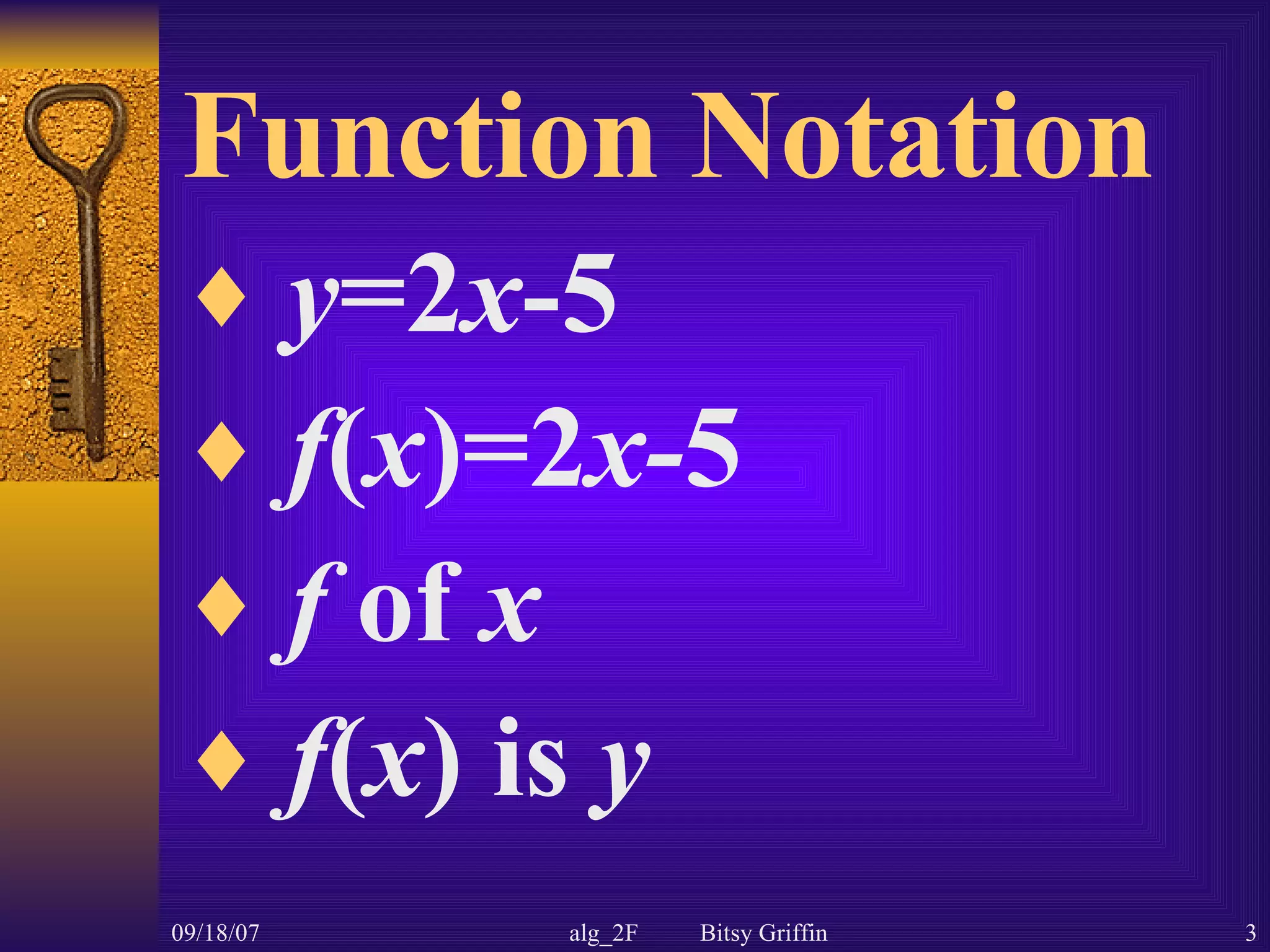
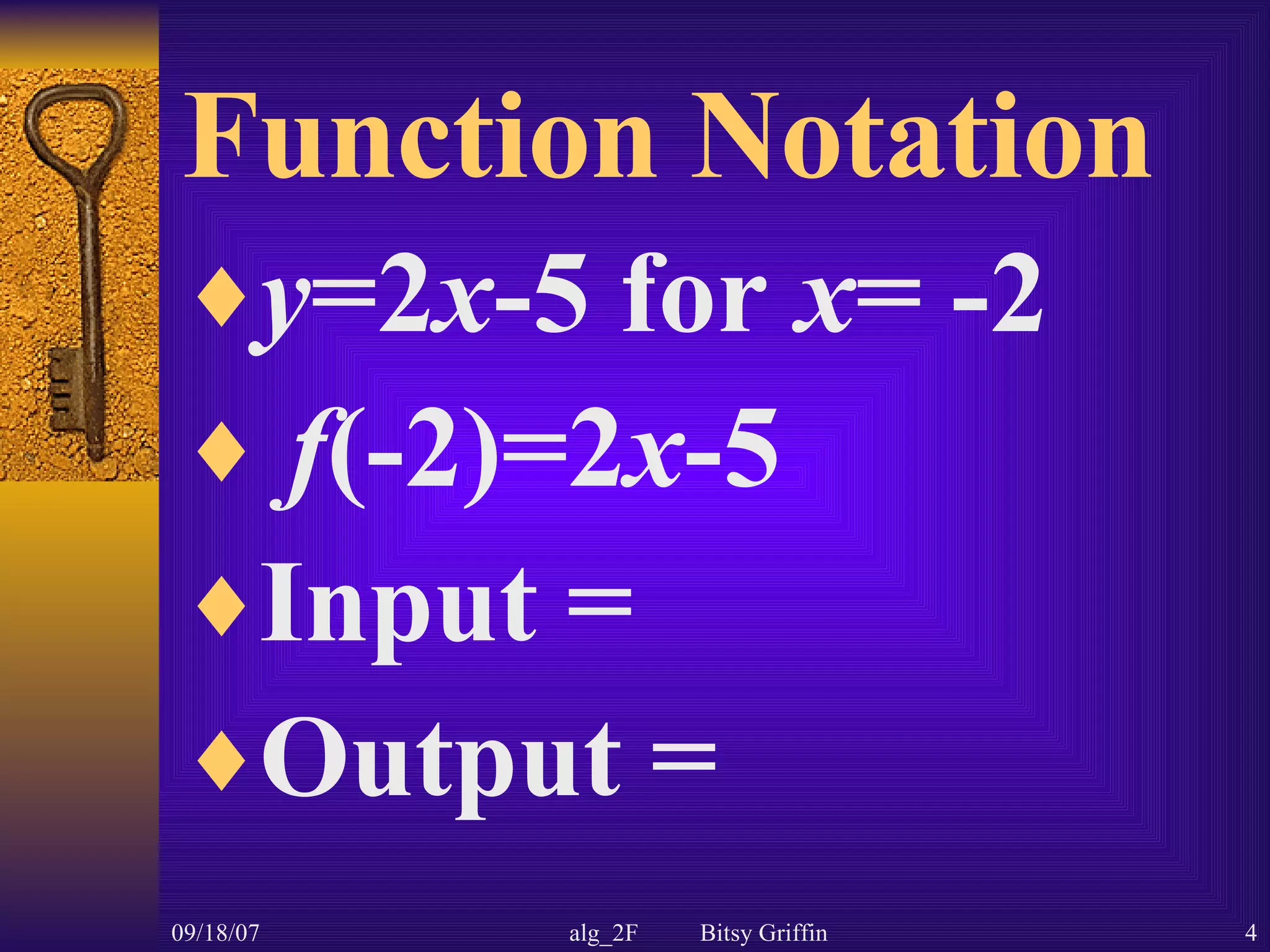
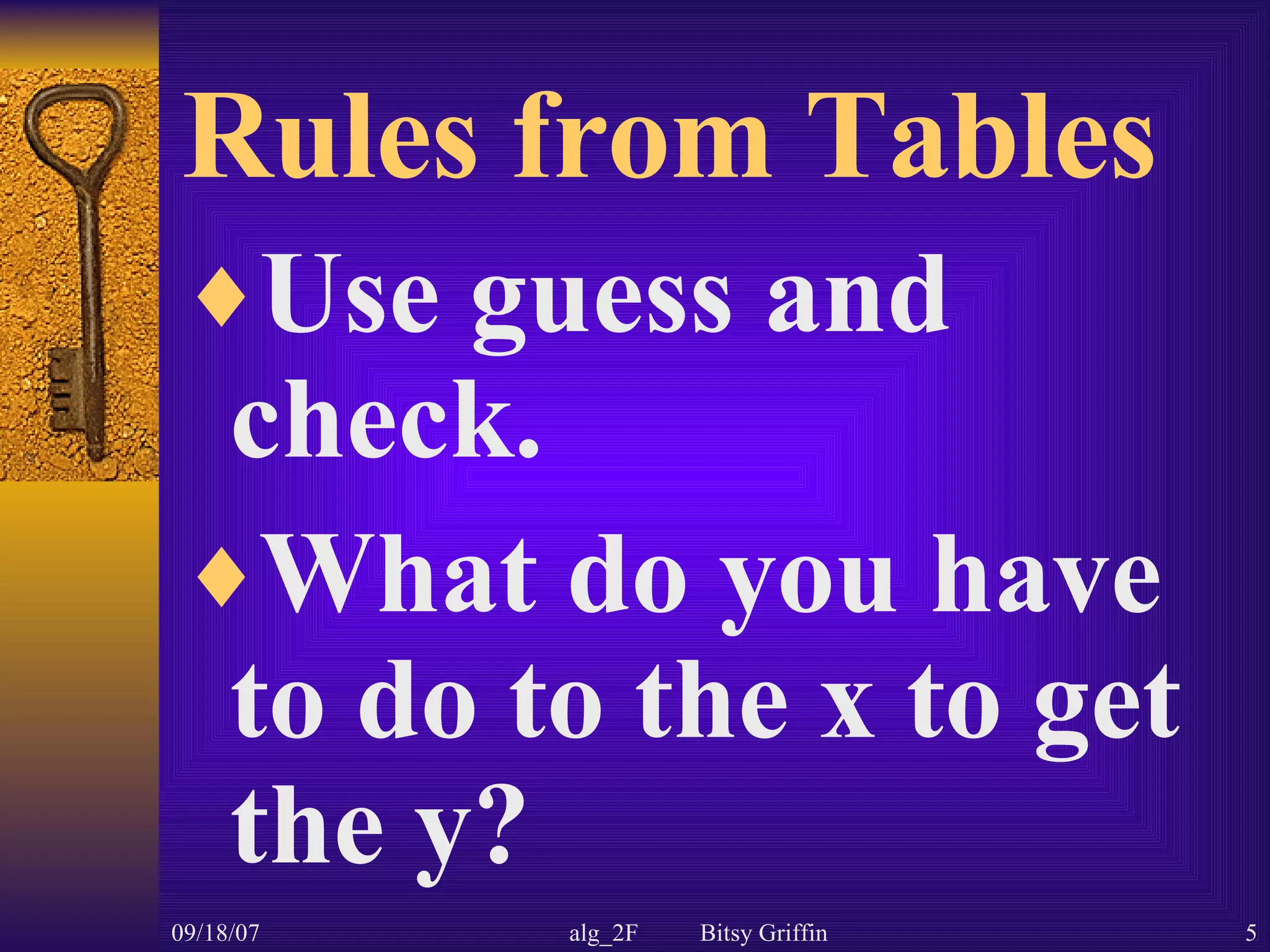
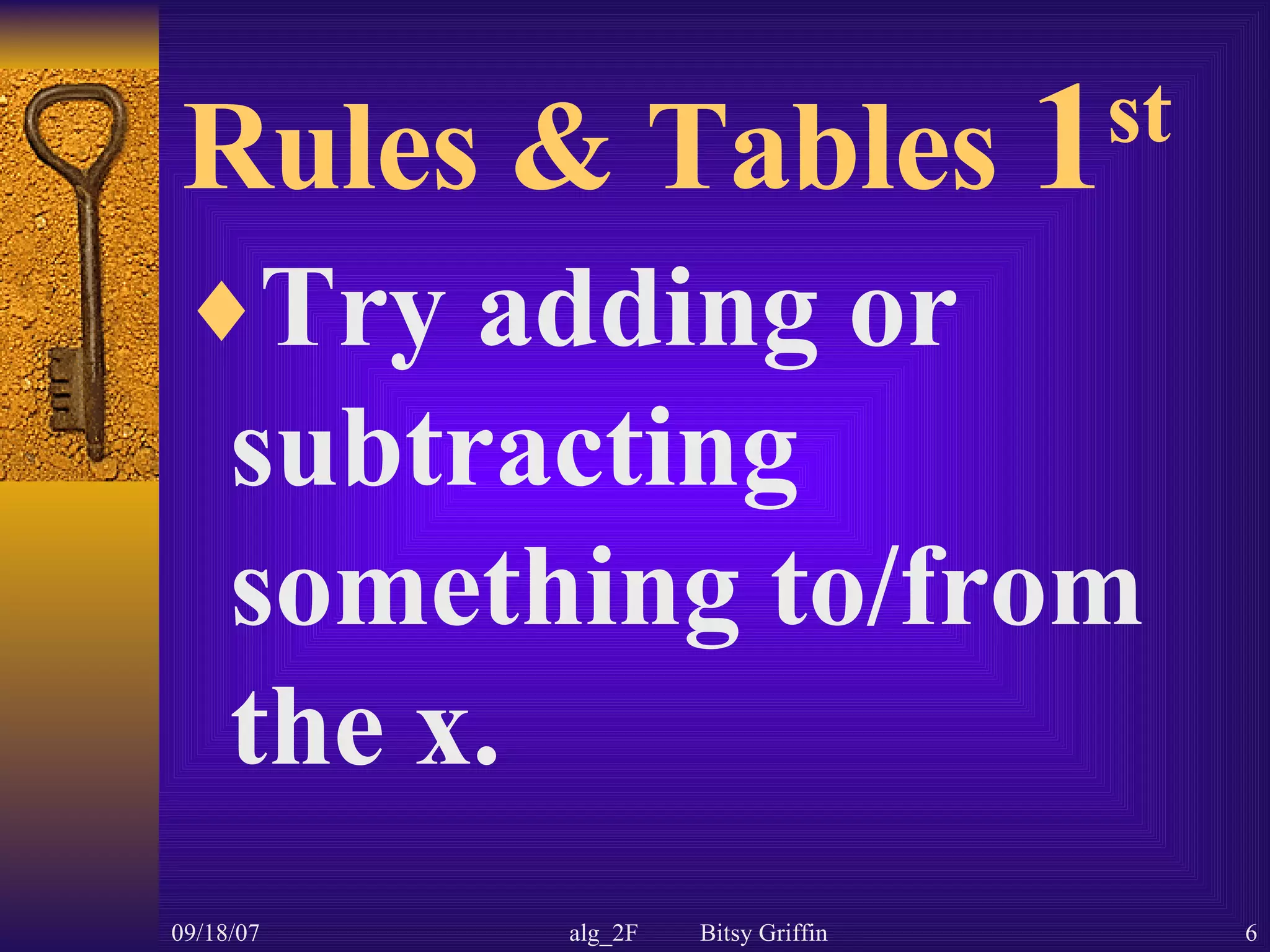
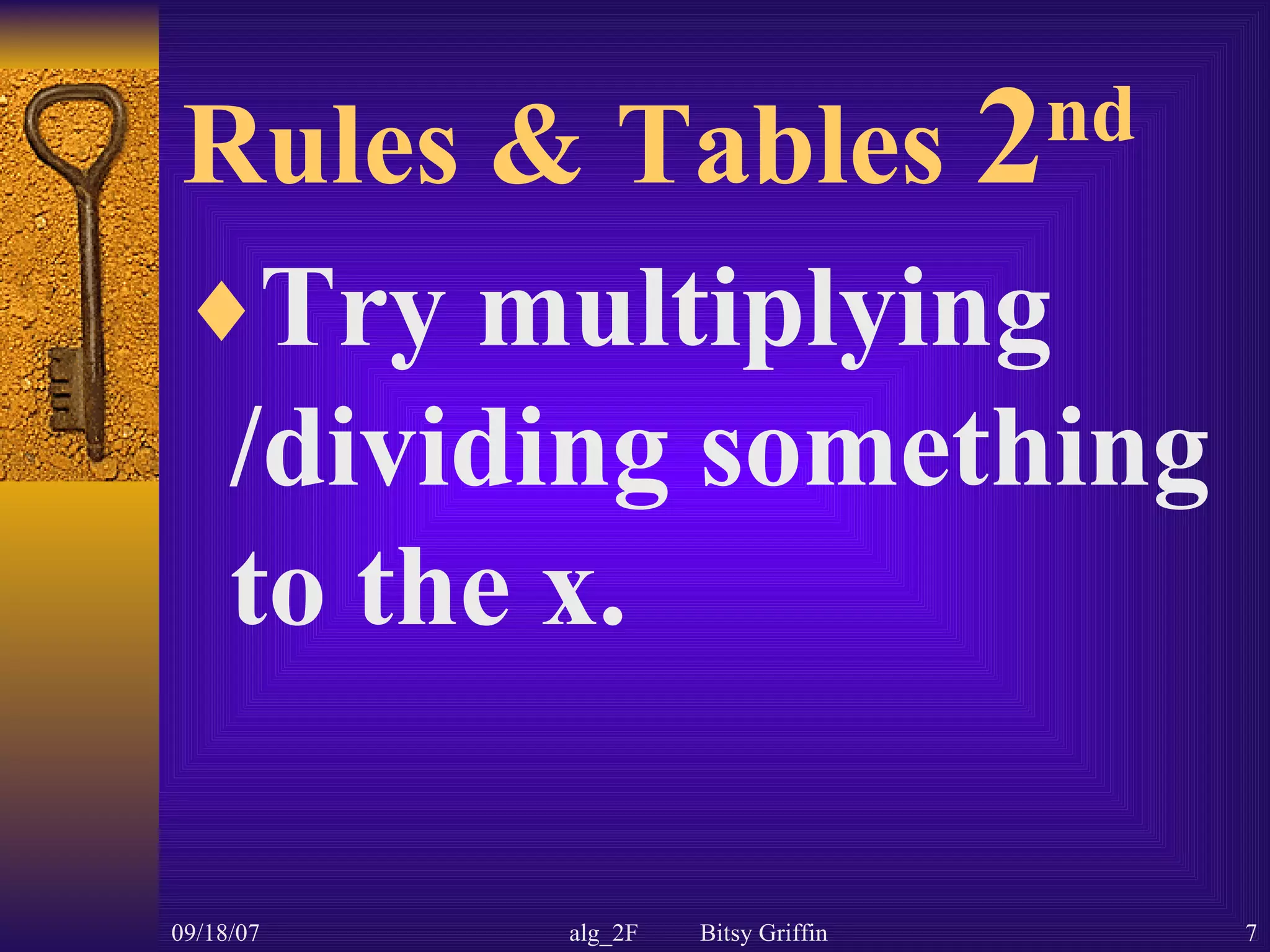
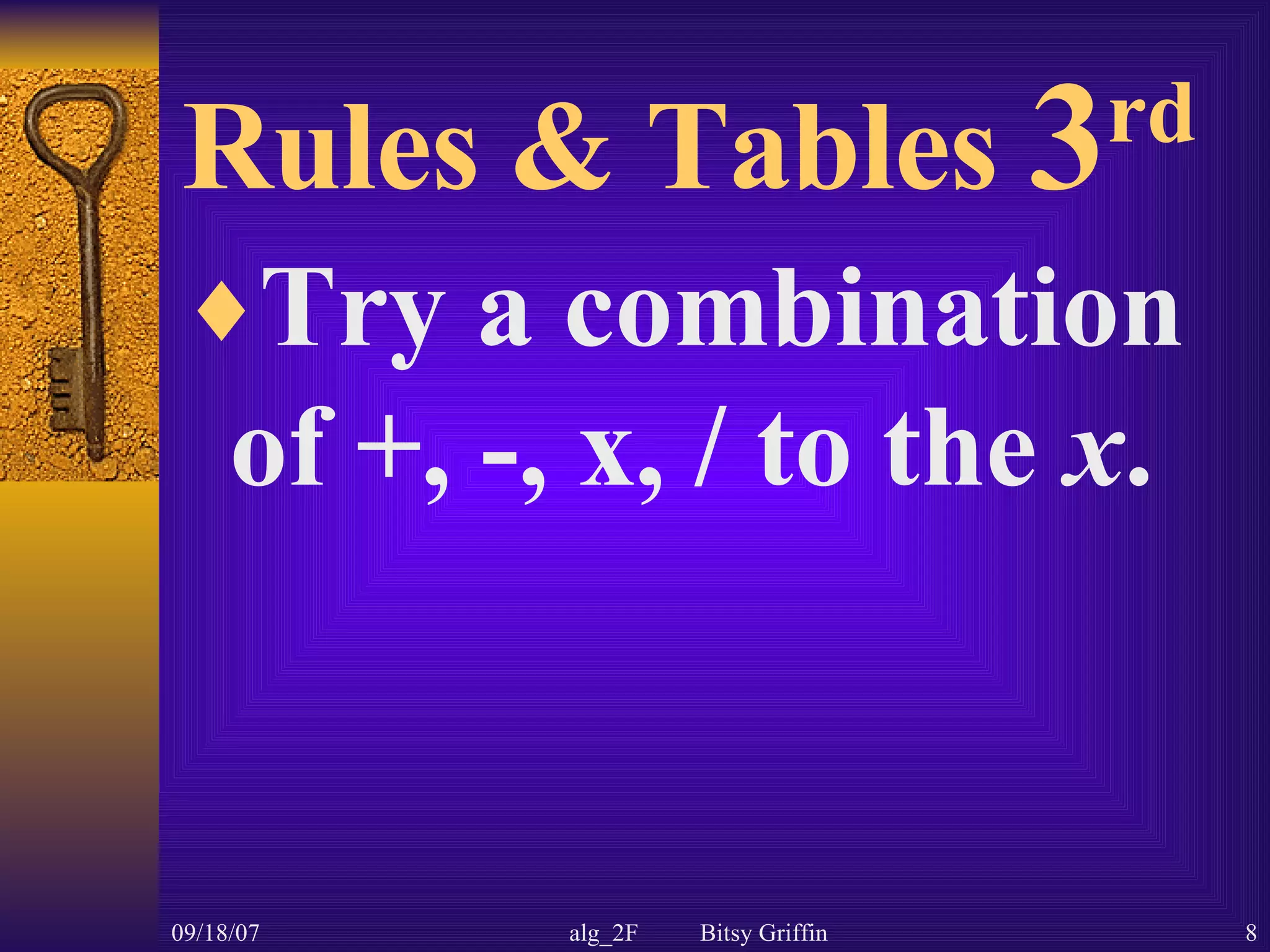
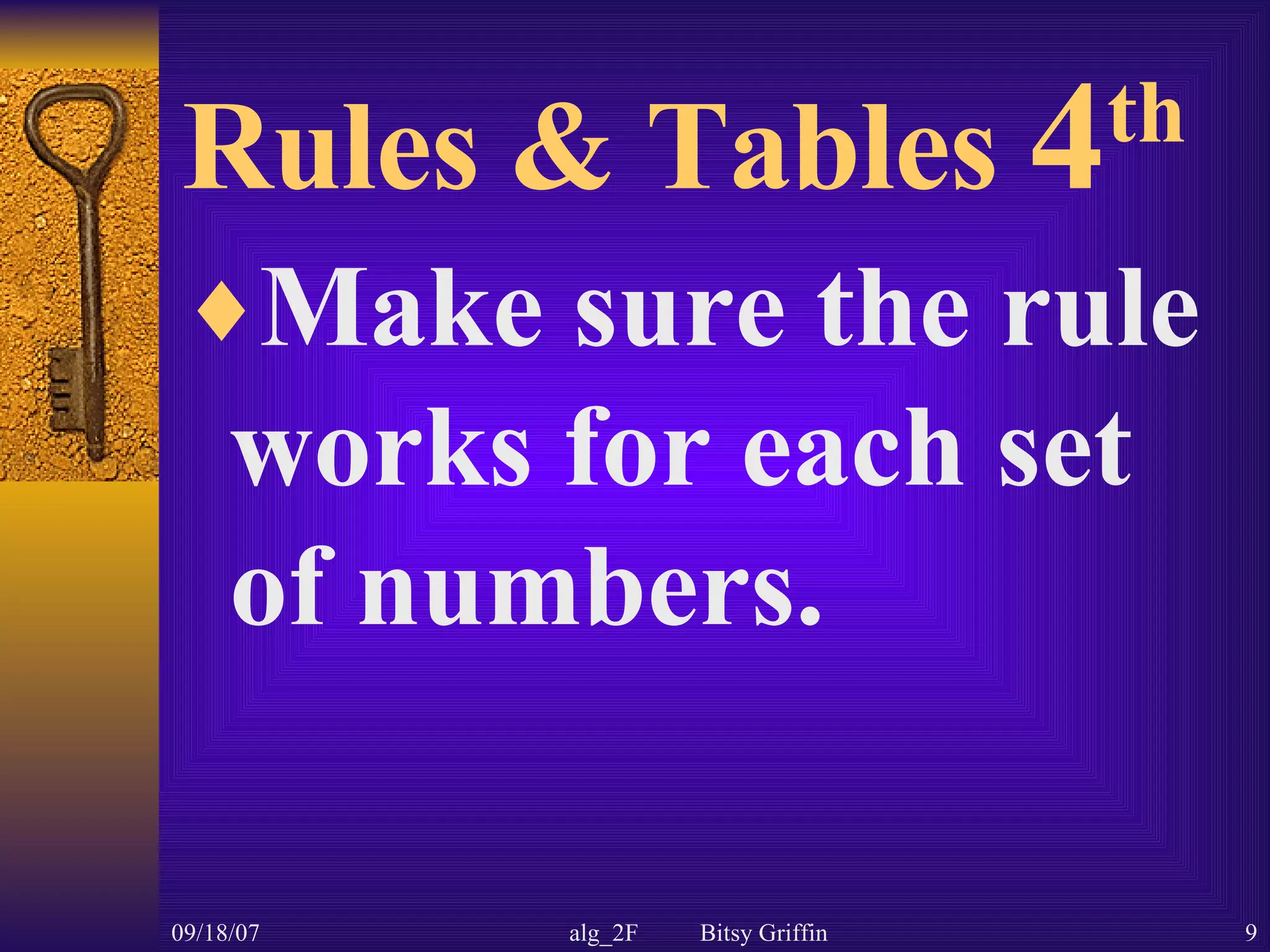
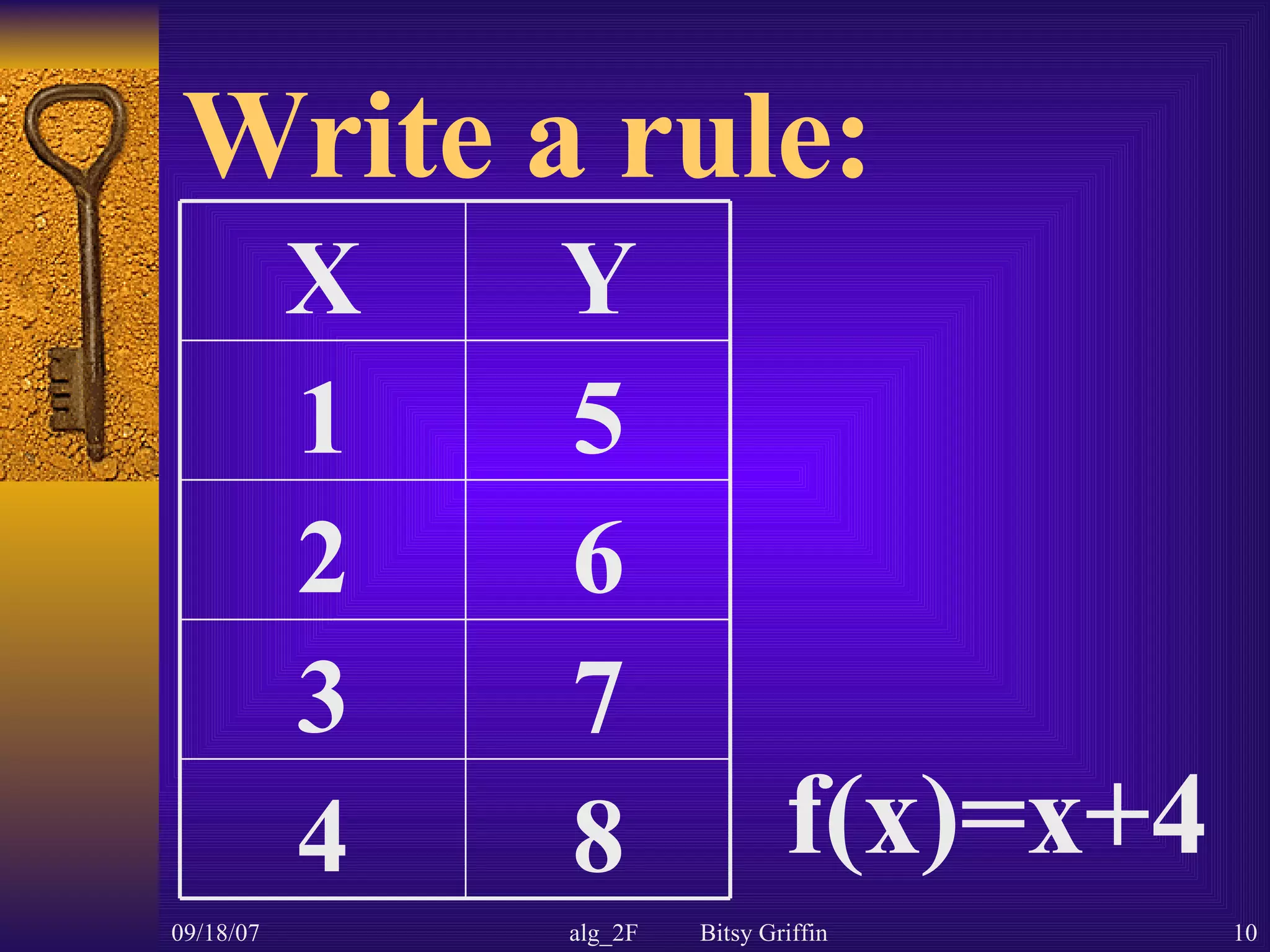
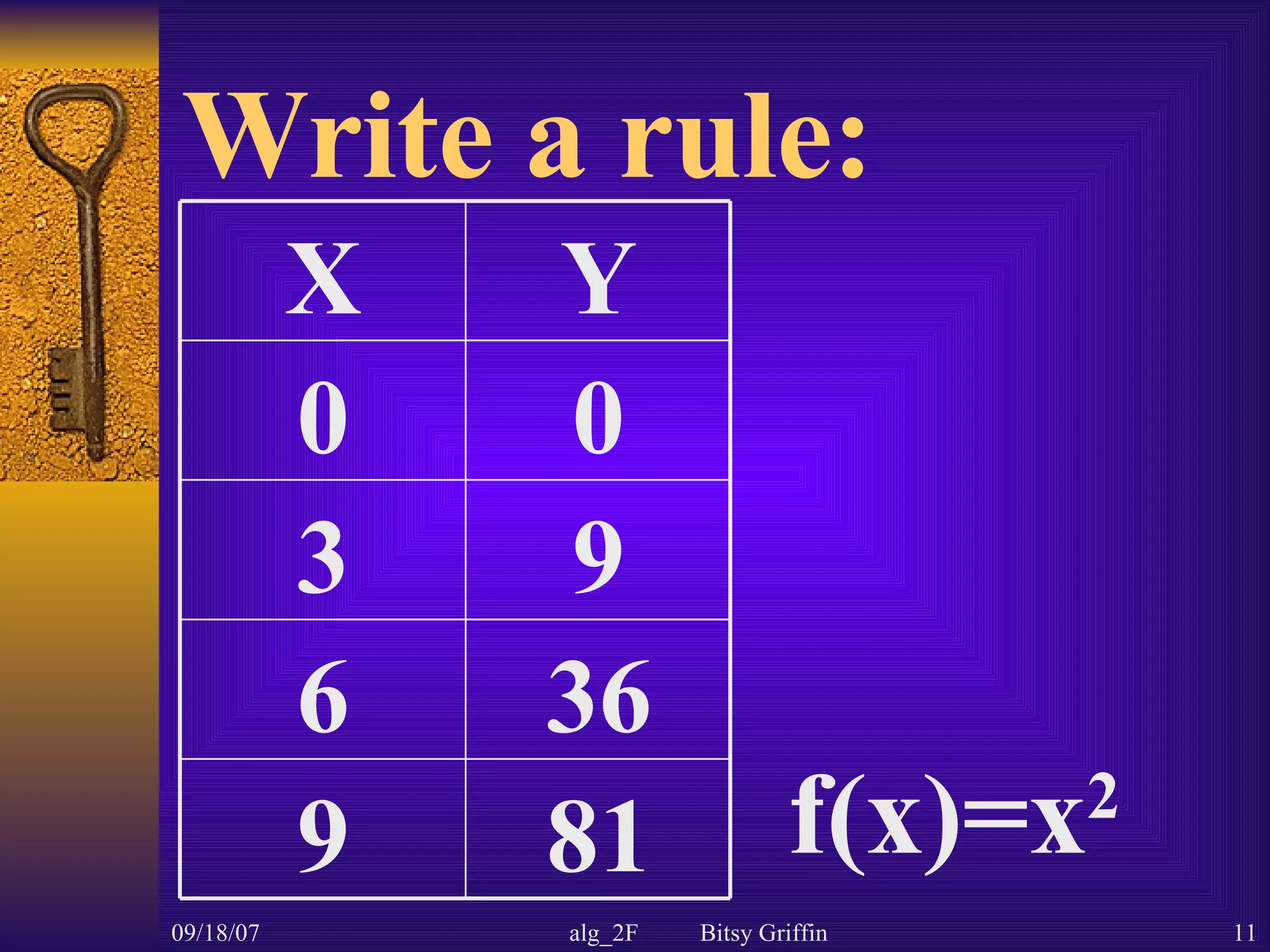
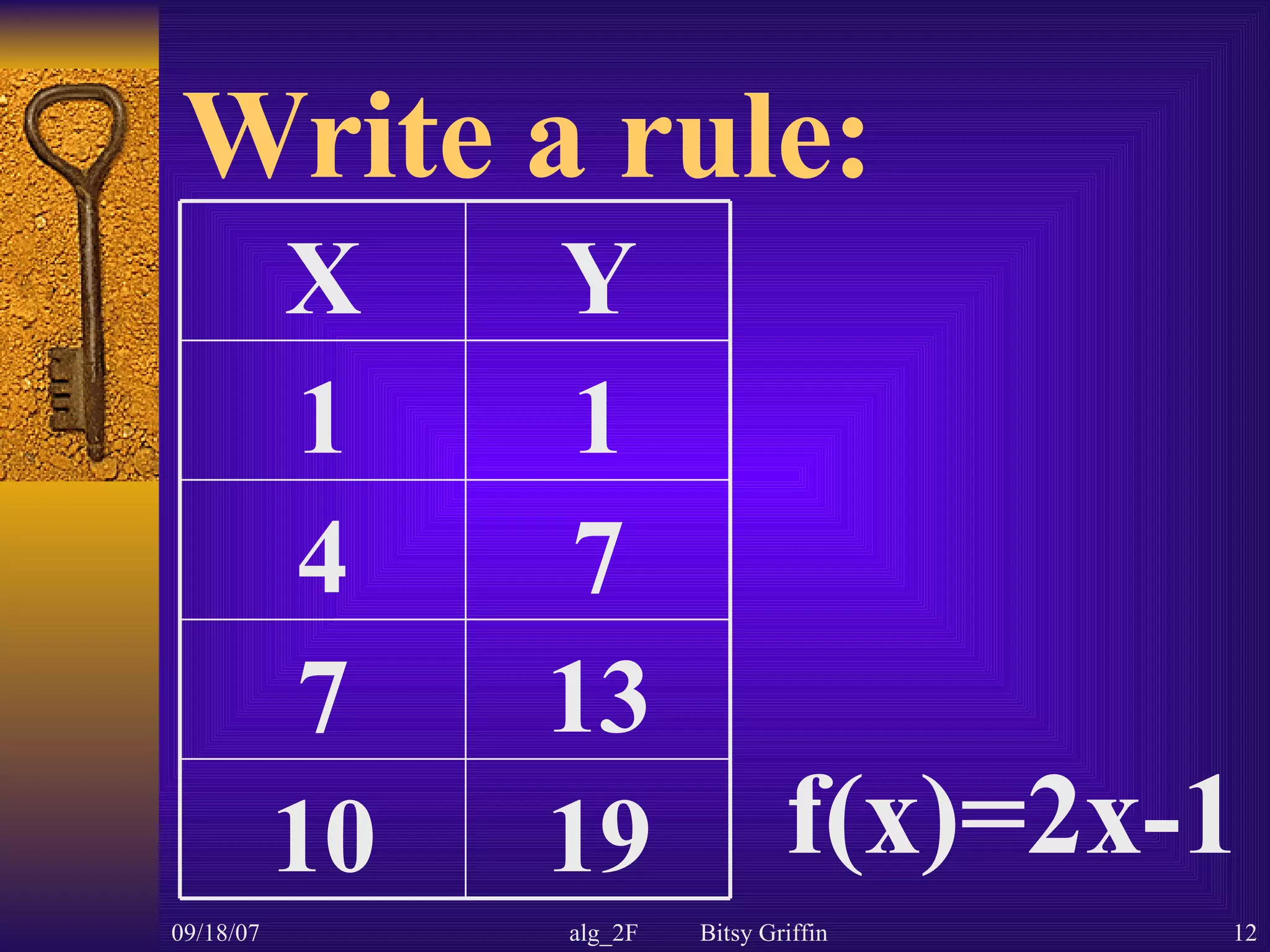




A function is a relation where no x-values repeat. Function notation uses f(x) to represent the input and output, where f(x) is equivalent to y. To write a function rule for a table, you first try adding, subtracting, multiplying or dividing the input value x. Then check if the rule works for each pair of x and y values in the table. The steps are to make an educated guess and then verify it is correct.
Introduction to functions defined as relations with unique x-values, represented in various formats like graphs or equations.
Explanation of function notation, specifically the format y = 2x - 5 and its application with specific inputs and outputs.
Step-by-step methods for deriving function rules from given data in tables, including addition, subtraction, multiplication, and ensuring rules are consistent.
Practical examples of writing function rules based on provided inputs and outputs, demonstrating linear and non-linear relationships.
Summary and review questions addressing functional notation, input locations, and the process for creating function rules from tables.














